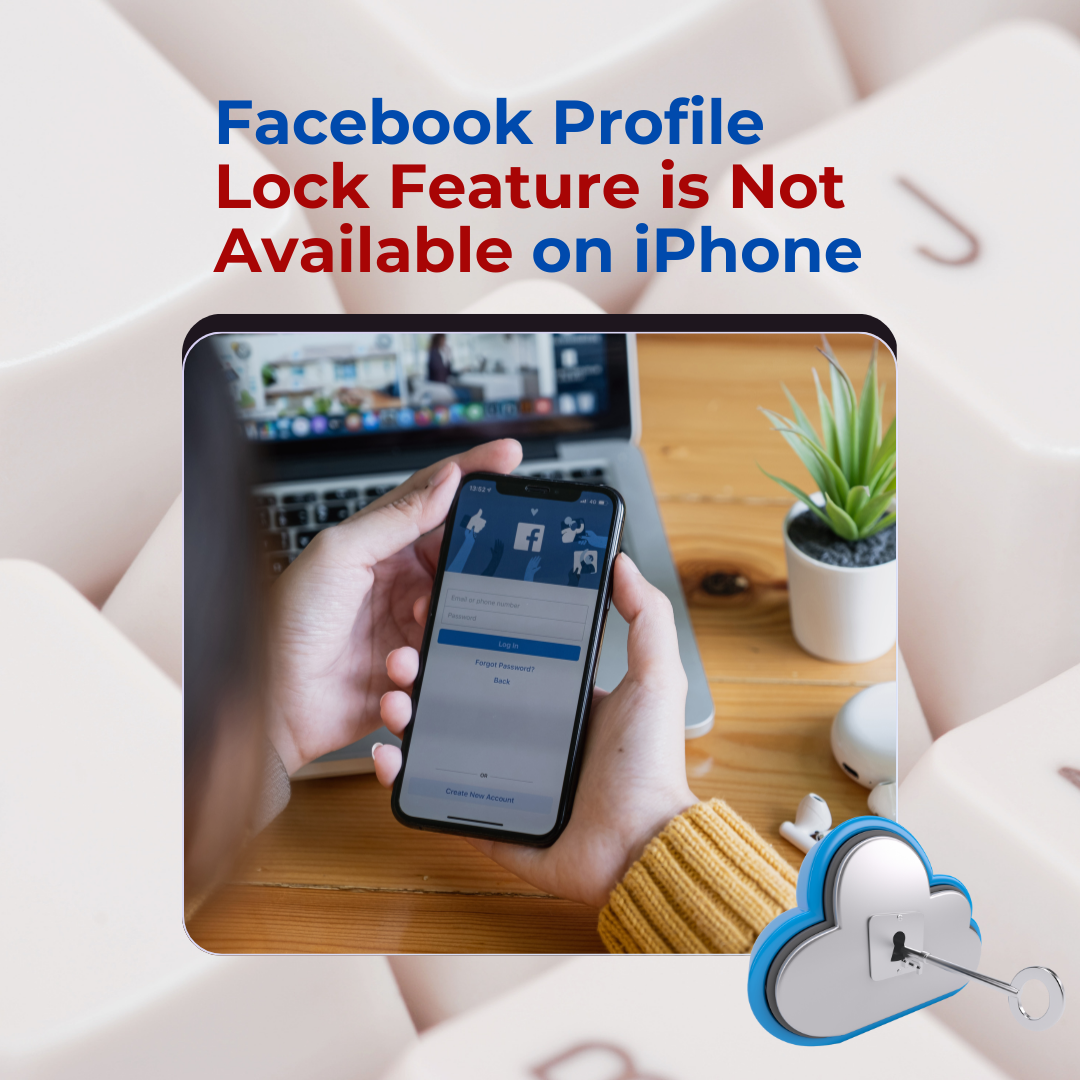The Significance of Profile Locking on Facebook, and Why It’s Limited to Mobile
In today’s digital world, privacy is more important than ever. Social networking sites such as Facebook include many personal information, making them a prime target for hackers, data miners, and unwelcome attention. The profile-locking feature is one of the most effective ways to secure your Facebook account. This feature improves privacy by limiting who can access your profile information. Understanding how to lock a Facebook profile and why it is restricted to mobile users is crucial.
What is Profile Locking on Facebook?
Profile locking on Facebook is a privacy option that restricts who can see your personal information. When you lock your profile, only your friends may see information such as your images, posts, and friend list. Non-friends and strangers will only see basic information, such as your name and profile photo. This option is particularly handy for people who value their privacy and want to restrict access to their personal information.
Why should you lock your Facebook profile?
With growing privacy issues, taking precautions to protect your online presence is critical. Here are some of the reasons why you might consider locking your Facebook page:
1. Prevent Unwanted Visitors
Unless you select privacy settings on Facebook, everyone can see your postings. Locking your profile prevents strangers from seeing your details. By blocking your profile, only friends may view your stuff, keeping undesirable visitors at away.
2.Improve your online security.
Locking your Facebook profile ensures that vital information is only accessible to those you trust. When strangers cannot see your posts, your personal information, such as phone number or home address, remains private. This reduces the danger of identity theft or fraud.
3. Limit the reach of your posts.
When you lock your profile, any posts you make are only visible to your friends. This reduces your exposure and the probability of trolling, abuse, or improper comments. You decide who can engage with your content.
4. Secure Your Photos and Friends List
Another reason to lock your Facebook page is to secure your images and friend list. When you lock your profile, only friends can see your photos, and strangers cannot browse your whole friend list. This ensures that your personal network stays secret.
How to Lock Your FB Profile
If you’re wondering how to lock FB profile, the process is quite simple but is only available through mobile devices for now. Here’s a step-by-step guide to lock your profile:
- Go to your profile by tapping on your profile picture
- Open the Facebook app on your mobile device.
- Click on the three dots (menu icon) beside your profile name.
- Scroll down and select the “Lock Profile” option
- A pop-up window will appear asking you to confirm. Select “Lock Your Profile.”
Once you’ve completed these steps, your profile will be locked. Only your friends now have access to your posts, photographs, and personal information.
Why is profile locking restricted to mobile devices?
Currently, Facebook’s profile locking feature is only available on mobile devices, and there are various reasons for this limitation.
1. The Mobile-First Approach
Facebook has taken a mobile-first approach in recent years. More people utilize mobile devices to access the platform than desktop computers. To cater to the bulk of its users, Facebook prioritizes improving functionality for mobile platforms. This means that profile locking is prioritized for mobile users, while desktop users must rely on alternative privacy options.
2. Simplified User Experience.
Mobile devices provide a more simple and compact interface for users to explore settings. Locking your profile on a mobile app is a straightforward operation that does not involve scrolling through numerous layers of settings. This ensures that consumers can simply change their privacy settings without difficulty.
3. Ongoing updates.
Facebook is always working on improving its features. The profile lock option may eventually be made available to desktop users as part of future upgrades. For the time being, however, Facebook’s privacy features are mostly geared toward mobile users.
Alternatives for Locking Your Facebook Profile
While locking your profile is one of the most effective ways to secure your information on Facebook, there are more privacy safeguards you can take to protect your data.
1. Adjust Privacy Settings
In addition to locking your profile, you may manually control who can view your posts. Go to the privacy settings and specify who can see your posts. You can make your postings visible exclusively to friends, particular people, or the general public.
2 .Limit profile information.
You can also limit the quantity of information displayed on your profile. Facebook lets you hide specific information, such as your phone number, email address, and birthday. Simply go to your profile settings and specify who can view this information.
3. Review Tagging Settings
Another useful feature is the ability to alter your tagging settings. You may choose who can tag you in posts and photographs. You can also evaluate tags before they show on your timeline, giving you greater control over their visibility.
Conclusion
Knowing how to lock your Facebook profile is a critical step toward protecting your privacy and security on the platform. Profile locking protects your personal data, ensuring that only trusted individuals can read it, and adds an extra layer of security against hackers and trolls. While the function is now limited to mobile devices, it remains one of the most effective ways to protect your Facebook account. Combining profile locking with other privacy options allows you to keep control of your

